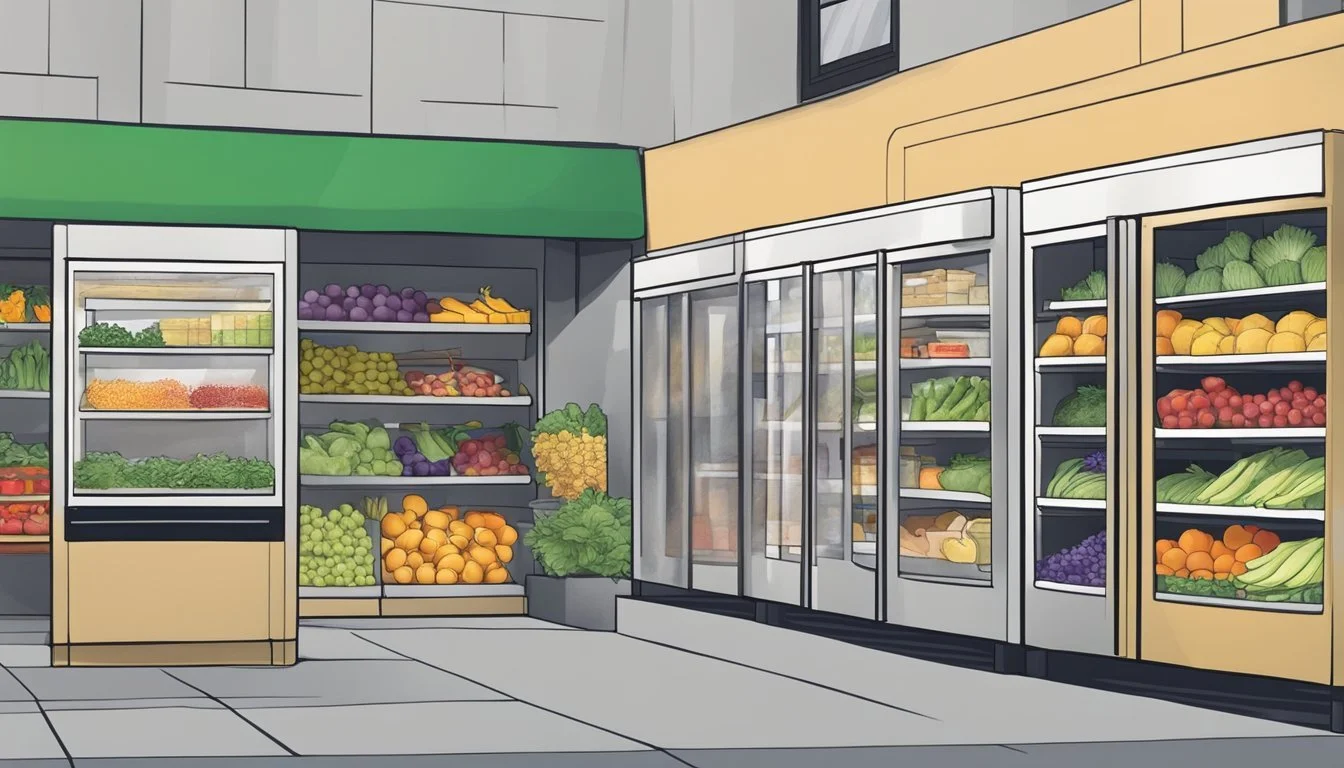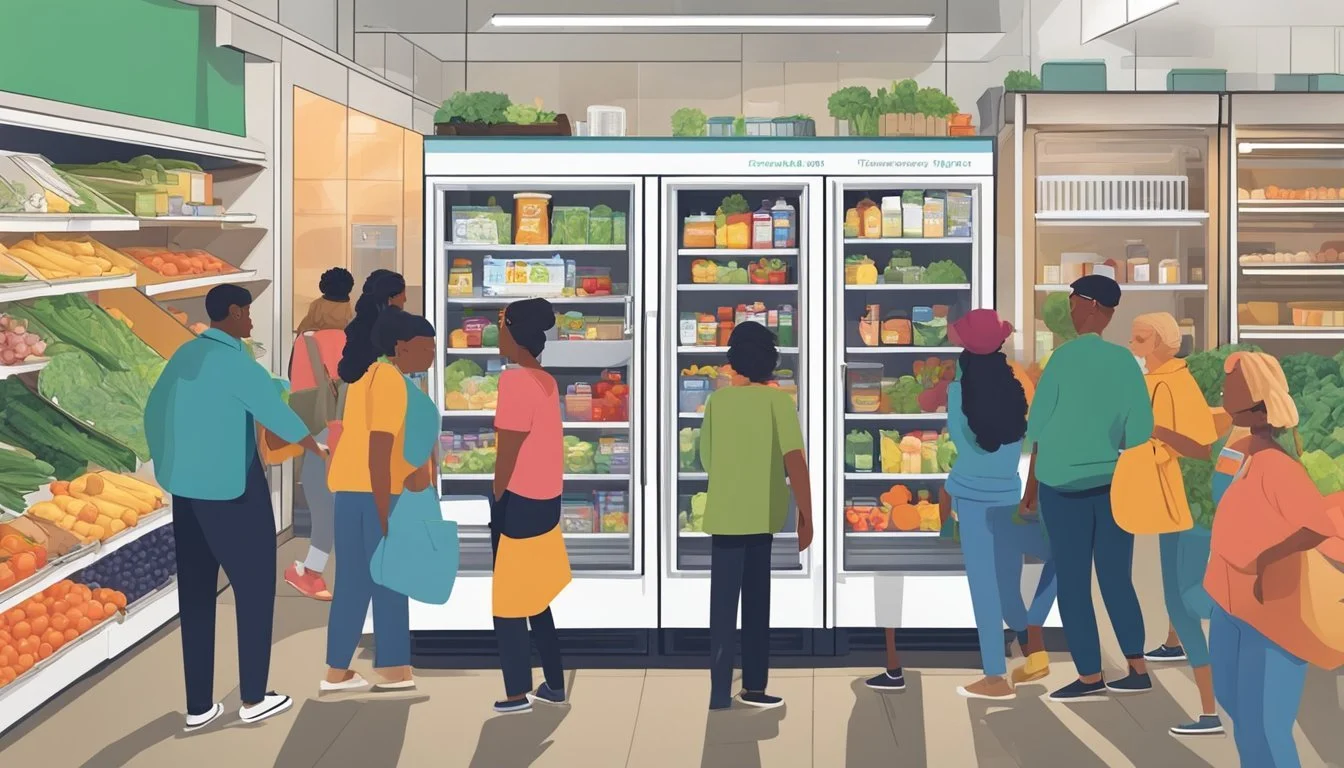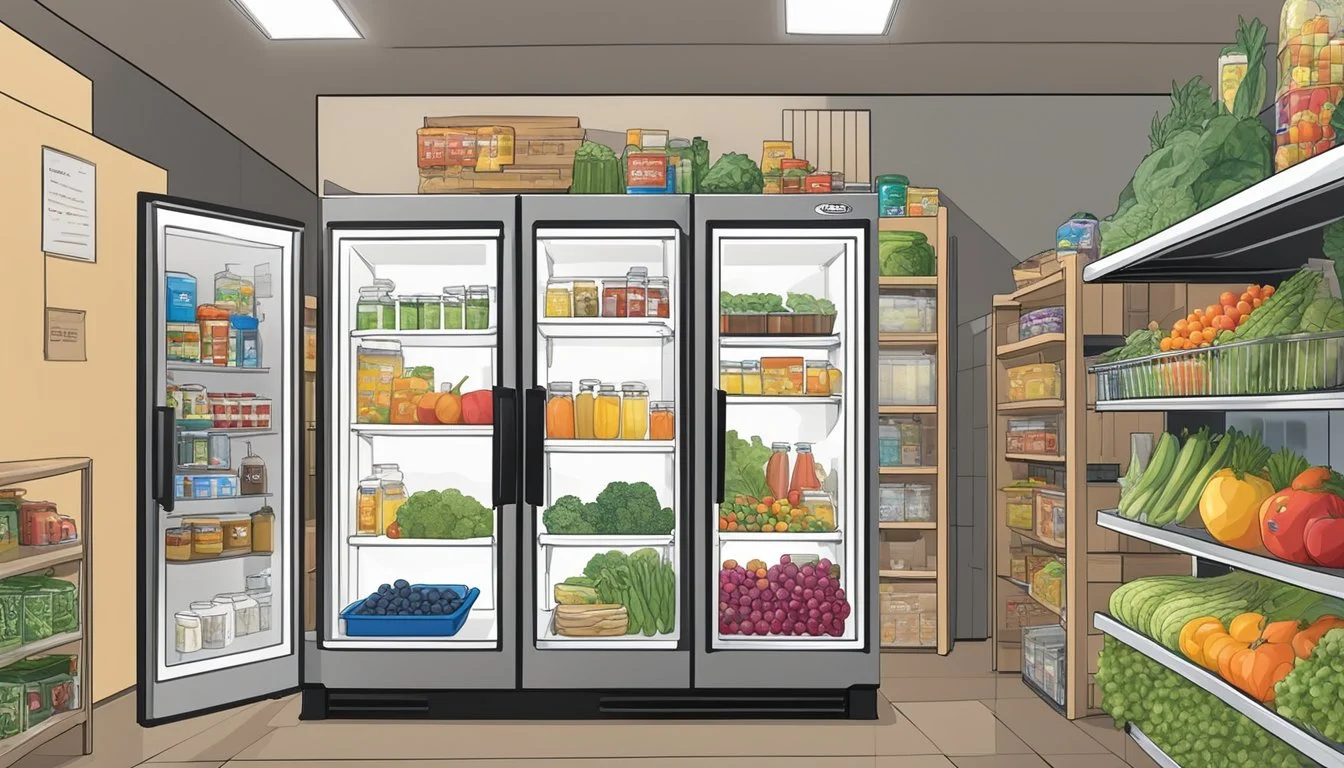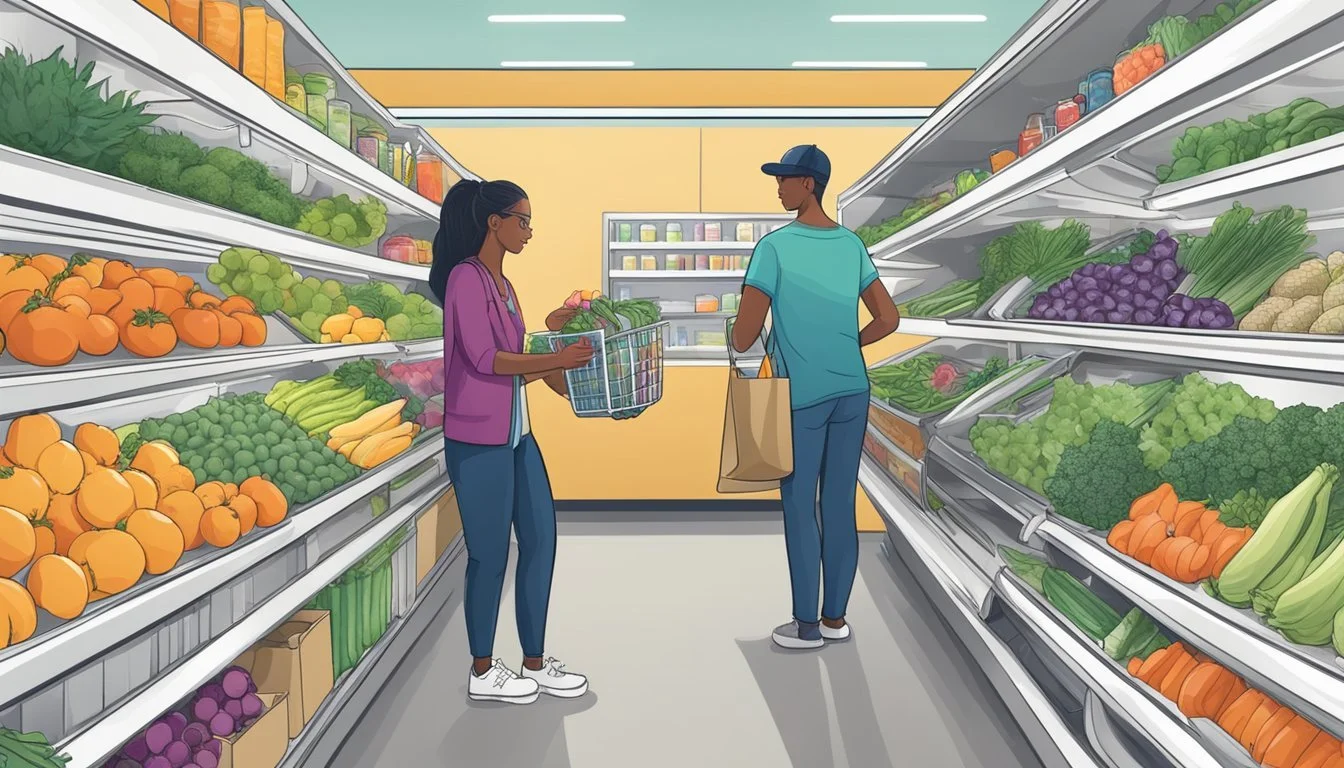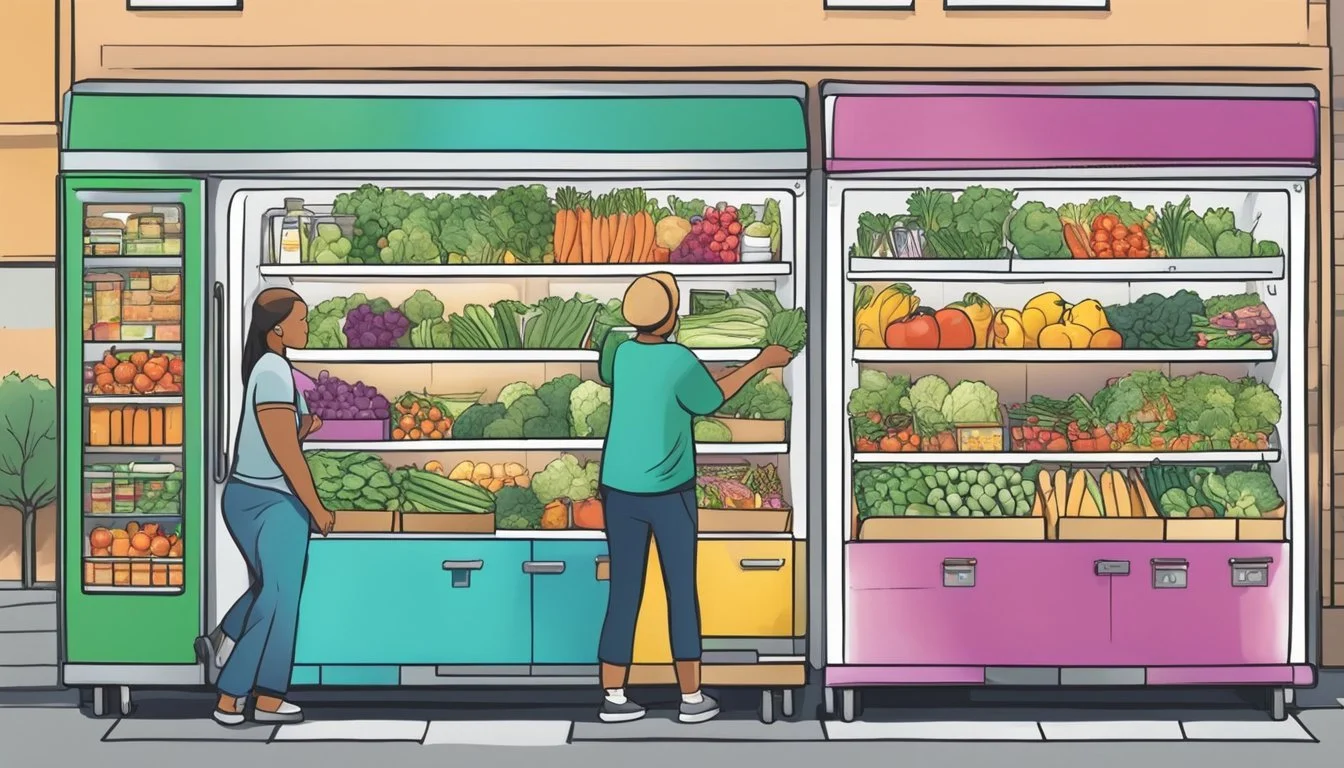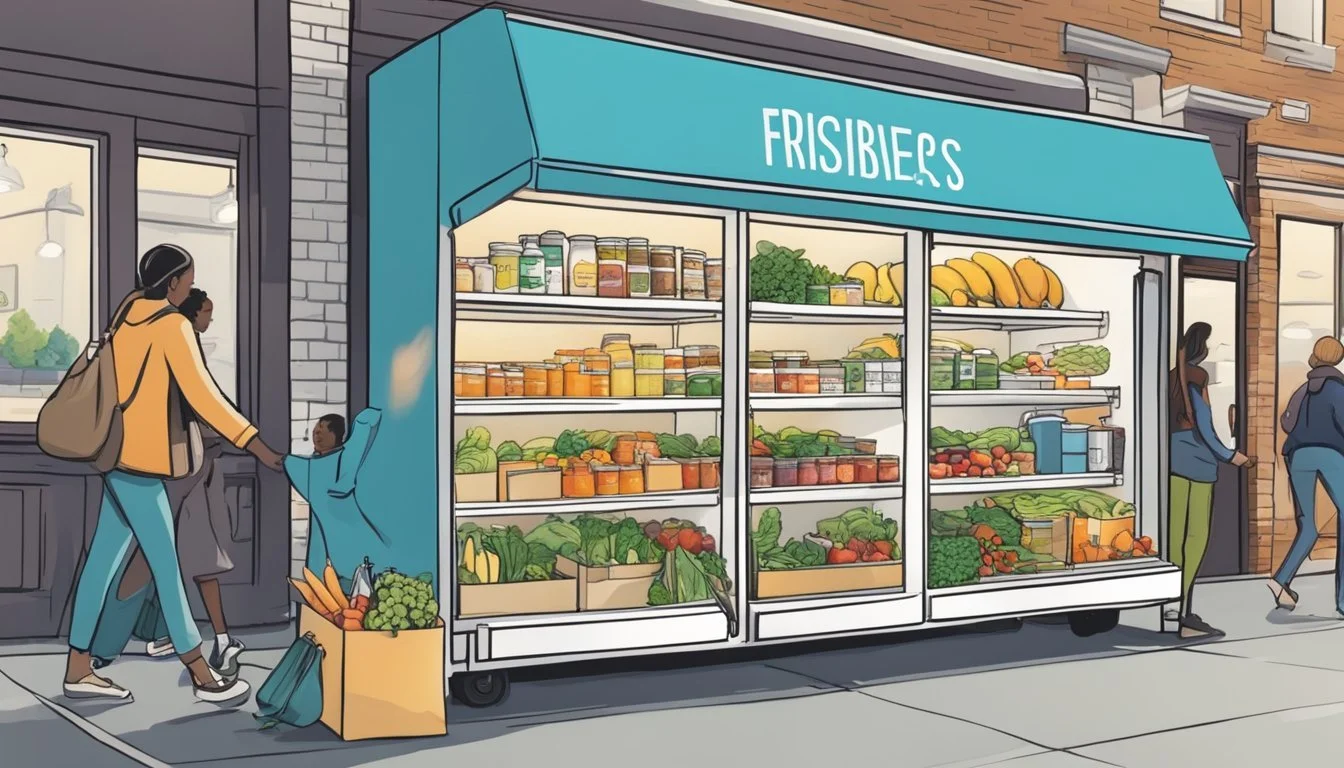Fishers, IN Community Fridge
Addressing Food Insecurity with Local Solidarity
Community fridges are a novel approach to tackling food insecurity and waste, and Fishers, Indiana, is part of this growing movement. Taking the concept of a communal pantry a step further, these refrigerators are accessible to the public, offering a place where individuals can leave or take food at no cost. Positioned in accessible locations, the fridges serve as a beacon of mutual aid, reducing food scarcity by enabling people to share surplus groceries and fresh produce within their neighborhood, thus reinforcing the communal bond.
The initiative in Fishers aligns with Freedge's ethos, an organization that promotes the installation of community fridges worldwide. This endeavor is not just about providing food but also about fostering a sense of shared responsibility and community spirit. By engaging with such programs, residents of Fishers contribute to the reduction of food waste, while ensuring that their neighbors have access to healthy and nutritious meals.
In the broader landscape of Fishers' community resources, the community fridge is a reflection of the city's commitment to sustainability and social welfare. By offering a straightforward and dignified means to address food insecurity, Fishers sets an example for how communities can come together to support their members in practical, impactful ways.
History and Purpose of Community Fridges
Community fridges have gained recognition as practical tools against food waste and food insecurity, especially highlighted during times of crisis like the pandemic.
Origins of Freedges
Community fridges, also known as freedges, originated as grassroots efforts to combat food waste and provide food to those in need. These publicly accessible fridges allow individuals to leave or take food without any exchange of money, fostering a sense of shared community resources. The movement has seen substantial growth in cities like New York City and Los Angeles, where community engagement and support have been pivotal.
Community Response to Food Insecurity During the Pandemic
The coronavirus pandemic exacerbated the existing challenge of food insecurity across the globe. As COVID-19 disrupted lives, many people found themselves in unforeseen economic hardship. During this time, community fridges served as a critical response to the increased demand for accessible food. Projects like the Los Angeles community fridges provided essential relief, and organizations such as Feeding America highlighted their importance in addressing the amplified needs of the time.
Operating a Community Fridge
Operating a community fridge requires careful consideration of its location and the ongoing expenses, including electricity and maintenance. Selecting an appropriate place and ensuring efficient refrigerator performance are critical to its success.
Finding the Right Location
The location of a community fridge should be easily accessible to those who need it, while also taking into account the logistics of stocking and maintaining the unit. Suitable materials for the structure housing the fridge include wood, glass, or plastic, considering durability and security. It's important to place the refrigerator in a spot that is sheltered from harsh weather conditions to prevent damage and ensure the safety of the food and users.
Managing Electricity and Maintenance
Electricity is an ongoing cost for a community fridge. Ensuring that the chosen location has a reliable power source is essential for the continuous operation of the fridge. A table outlining the expected maintenance schedule could look like this:
Frequency Maintenance Task Daily Check temperature settings Weekly Clean interior and exterior Monthly Inspect and clean coils As needed Repair or replace parts
To minimize costs and maintain efficiency, the refrigerator should be energy-efficient and kept in good working condition. Proper maintenance includes regular cleaning and timely repairs to avoid increased electricity usage and potential breakdowns.
Contributions and Support
The Fisher's IN Community Fridge operates through a collective effort, hinging on donations, voluntary aid, and robust partnerships to combat food waste and enhance food distribution.
Food Donations and Sourcing
The fridge's lifeline is its food donations, primarily consisting of produce and essentials like milk. Grocery stores and local farms are significant contributors, providing a pathway to utilize excess food that would otherwise contribute to waste. Donations are not only limited to businesses; community members are also encouraged to donate food items that are within the use-by date and in good condition.
Produce: Fresh fruits and vegetables
Dairy: Including milk and cheese
Non-perishables: Such as canned goods and pasta
Volunteer Involvement
Volunteers are the backbone of the operation, managing the logistics of food distribution and maintaining accountability to ensure safety and hygiene standards are upheld. They handle the transportation of food donations from points of collection to the fridge and aid in organizing the storage to optimize space and accessibility. Their roles are crucial and diverse, from stocking to cleaning, and they are often recruited and organized via social media and mutual aid network communications.
Stocking: Ensuring a variety of food items are available
Cleaning: Regular maintenance for safety
Organizing: Efficient use of space and tracking expiry dates
Partnerships and Community Engagement
Building effective partnerships with local businesses, charities, and food banks amplifies the community fridge’s impact. These collaborations are essential, creating a sustainable funding model and a steady flow of donations. Mutual aid groups and community organizations often work in tandem, utilizing their networks to promote the fridge's presence, rally support, and ensure a degree of social media visibility that is key for sustained community engagement.
Donation Channels: Strengthening relations with food providers
Awareness: Outreach and education through events and online platforms
Sustainability: Long-term support from local entities
Nutrition and Assistance Programs
In Fishers, Indiana, community efforts aim to address food insecurity and nutritional needs with programs designed to supplement food resources for those in need.
Connecting with SNAP and Food Banks
The Supplemental Nutrition Assistance Program (SNAP) provides vital food purchasing assistance to low-income individuals and families. Locally, eligible residents can apply for SNAP benefits, which can be used to buy essential food items like bread, eggs, and milk at participating stores. Food banks in Fishers complement SNAP by offering additional food support, ensuring that no member of the community goes without the sustenance they need.
Facilitating Access to Fresh Produce
Fishers' initiatives also prioritize food justice and the availability of fresh produce. Community fridge programs, often referred to as 'freedges,' provide free access to fresh fruits and vegetables, encouraging nutritional diets among all community members. By offering bottled water and perishable goods without cost, these fridges support the health and well-being of residents, fulfilling a commitment to universal food access.
Community Fridge Maintenance and Logistics
The successful operation of the Fishers, IN Community Fridge hinges on rigorous maintenance and attention to logistics. These protocols ensure the safety and quality of food while adhering to legal and safety standards.
Ensuring Food Safety and Quality
Refrigerators play a critical role in preserving the integrity of perishables. They must operate within specific temperature ranges to prevent spoilage and ensure food safety. Regular maintenance checks and temperature tracking, ideally with a digital data logger, are mandatory. Volunteers should perform a daily survey of food items to remove anything that is past its use-by date or shows signs of spoilage.
Key steps include:
Daily Cleaning: Wipe down interior surfaces to limit bacterial growth
Temperature Checks: Twice daily to confirm operation within safe limits
Item Rotation: First in, first out (FIFO) practice to keep inventory fresh
Addressing Legal and Safety Concerns
Legalities and safety factors must be addressed to safeguard the community and the organizers. Compliance with local health regulations is a must, which involves regular food safety checks and keeping up with any required permits or food handling guidelines.
For maintenance of the physical space around the refrigerators, it includes:
Clear Signage: Labeling for proper use and emergency contacts
Safety Inspections: Routine checks for electrical and structural hazards
This comprehensive approach to maintenance and logistics is fundamental for the health and trust in the Fishers, IN Community Fridge initiative.
Engagement and Outreach
The Fishers, IN Community Fridge initiative thrives on active engagement and extensive outreach, ensuring that the benefits of the friendly fridge reach everyone in need. They focus on delivering kindness through accessible food and fostering a well-informed community.
Educational Initiatives and Community Awareness
The program prioritizes education and awareness as critical components in their outreach strategy. They leverage:
Workshops on the importance of community fridges
Distribution of informative books and materials
Use of local media to highlight stories of impact
Educational efforts are designed to inform residents about how they can contribute to and benefit from the friendly fridge, whilst also spreading awareness about the significance of community support and kindness.
Fundraising and Financial Support
To sustain their operations, the community fridge initiative relies on a blend of financial support;
GoFundMe campaigns for community contributions
Applications for grants from philanthropic organizations
Negotiations for discounts with local food suppliers
Fundraising events that also serve as awareness campaigns
They utilize these funds not only for the fridge's upkeep but also to purchase supplies like masks during health crises, ensuring the fridge is more than just a food resource—it's a community safety net.
Starting Your Own Community Fridge
Establishing a community fridge, or "Freedge," empowers individuals to combat food waste and address food insecurity. It requires careful planning, finding suitable appliances, and a dedicated director or team to coordinate efforts.
Step-by-Step Guide to Starting a Freedge
1. Research and Planning: Initial research should focus on understanding the community's needs and learning from existing community refrigerator initiatives, possibly drawing inspiration from those pioneered in Germany.
Assemble a Team: Identify a group of individuals willing to commit to the project, including a director to guide overall operations.
Legal Considerations: Investigate local regulations concerning food distribution to ensure compliance.
2. Sourcing a Fridge: Reliable appliances are a cornerstone for starting a community fridge.
Find a Fridge: Look for donations of secondhand units from local businesses or purchase one if funds allow.
Secure a Location: Choose a well-trafficked, accessible spot that has the consent of property owners and community members.
Installation: Ensure the location has the necessary electrical hookups and protection from the elements.
3. Launch and Promote:
Stock the Fridge: Initially fill the fridge with donations and spread the word to encourage ongoing community contributions.
Announce the Initiative: Use social media, local press, and community events to raise awareness and educate the public on how to get involved.
Lessons from Successful Community Fridges
Key Practices:
Regular Cleaning and Maintenance: It's essential to keep the fridge clean and maintained to ensure food safety and appliance longevity.
Clear Guidelines: Post visible rules concerning what can be donated to prevent the disposal of spoiled or unsafe items.
Community Engagement: Foster a sense of ownership among community members, encouraging them to contribute and monitor the fridge.
Learning from Experience:
Community refrigerators thrive under strong leadership that can navigate challenges, such as fluctuations in food donations and seasonal demands.
Transparency and clear communication with stakeholders build trust and sustain the initiative over time.

